Corporal Warren Amel Bolin
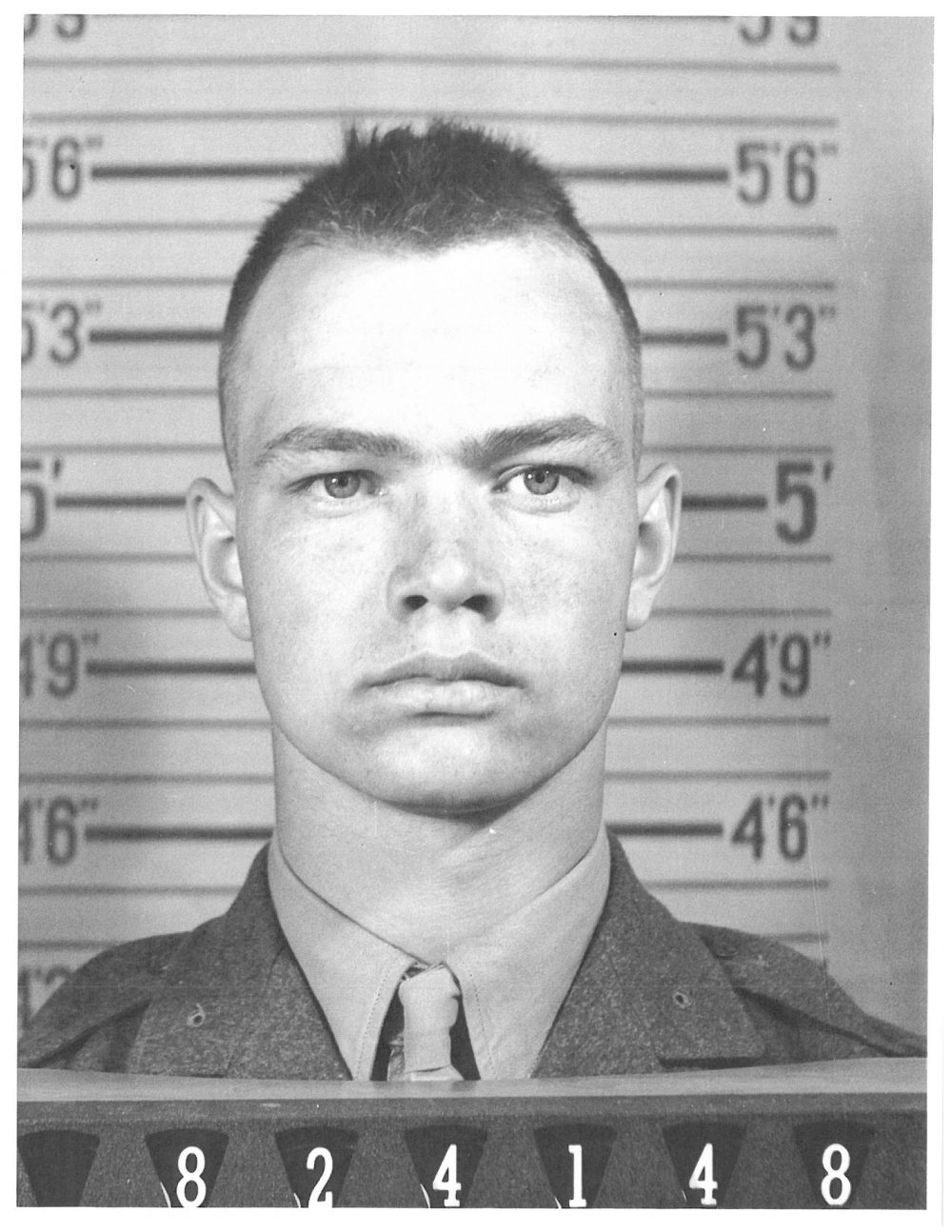
- Unit: Marine Bombing Squadron 612
- Service Number: 824148
- Date of Birth: September 25, 1923
- Entered the Military: February 26, 1943
- Date of Death: February 13, 1946
- Hometown: St. James, Minnesota
- Award(s): Purple Heart, Air Medal
- Cemetery: Tablets of the Missing. Honolulu Memorial, Honolulu, Hawai'i
Cambridge-Isanti High School
2016-2017
Early Life
Warren Bolin grew up during the Great Depression in the farming community of St. James, Minnesota. His father, Amel, managed a lumber yard, while his mother stayed at home to care for their eight children.
Bolin was an active member of the St. James community. He played baseball, performed in the glee club and chorus, and served as class secretary, sports editor, and football manager at St. James High School. He also became an Eagle Scout.
In 1941, Bolin graduated from St. James High School and enrolled at the University of Minnesota to study aeronautical engineering. In the summer of 1942, Bolin worked at an aircraft assembly plant in New York. He continued his studies at the university through the fall semester of 1942, until his younger brother, Richard, was old enough to join the military with him.
The Bolin brothers arrived at the military recruiting station with the intent to join together but were sent to different branches—Richard to the U.S. Navy and Warren to the U.S. Marine Corps. Warren Bolin’s interest in aeronautics led him to a job in aviation. Before he arrived at his squadron, he experienced one year of military schooling which included U.S. Marine Corps basic training.
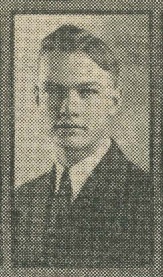
Military Experience
In April 1943, after graduating from basic training at the U.S. Marine Corps Recruit Depot in San Diego, California, Bolin was assigned to the U.S. Marine Corps Aviation Base at Kearney Mesa, California, for general duty while he awaited orders to radio school.
On May 18, 1943, Bolin joined Training Squadron 11 for the Airborne Radio Operator School at the Naval Air Technical Training Center (NATTC) in Jacksonville, Florida. He graduated from the school in September 1943 but remained in Jacksonville for Naval Air Gunners School. In November 1943, Bolin earned his primary military specialty, radio gunner. There were a few more months of training in Florida in dive bombers before he would finally join his fleet Marine unit.
Marine Bombing Squadron 612 (VMB-612)
On October 15, 1943, Marine Bombing Squadron 612 (VMB-612) was formed and placed under the leadership of Lieutenant Colonel Jack Cram. As a new unit, they had limited access to personnel and equipment. The first few months of training focused on getting the pilots qualified and proficient in the aircraft. They would be flying the PBJ-1, a naval version of the B-25 Mitchell bomber.
Initially organized to be a low-altitude bombing squadron, VMB-612 was selected to experiment with new radar and radio equipment to assess its feasibility in combat operations. This new equipment would allow the squadron to search for and attack naval vessels at night.
Bolin joined VMB-612 on January 14, 1944. In the spring of 1944, the unit trained with their new equipment, got in top physical shape, and completed a basic parachuting course. In May 1944, VMB-612 moved to Boca Chica, Florida, to conduct torpedo and anti-submarine training. By August, Bolin and his squadron moved to California to deploy.
While in California, VMB-612 discovered rockets that could be mounted and fired from their aircraft. The squadron soon departed for Pearl Harbor, Hawaii, but they now had a new weapon with which to experiment.
Refining Tactics
During a short stopover in Hawaii, VMB-612 developed techniques to accurately and consistently fire the five-inch rockets from the PBJ-1s. The standard rocket training they received, where the airplane would dive at an angle of 15 to 20 degrees, was ineffective for their nighttime operations.
Instead, they attempted to fire the rockets from a straight-and-level flight attitude, and found that if the aircraft speed and elevation were constant, they could anticipate where the rockets would strike. At an altitude of 300 feet and a speed of 180 knots, the rocket would strike the surface 1,350 feet from the point of release.
Bolin and his squadron departed Hawaii on September 13, 1944, and stopped in Eniwetok Atoll, approximately 1,000 miles southeast of Saipan, to prepare for combat missions. VMB-612 continued to practice the methods they developed in Hawaii. The new radio equipment allowed the rocket attacks to be made on automatic pilot. The bombardier in the nose of the airplane took control from the pilot and used the radio and radar equipment to guide the aircraft to the correct heading and elevation. When the aircraft reached a distance of 1,350 feet from the target, the radar triggered the rockets to fire.
Using these techniques, the squadron estimated that they could hit a target approximately 56 percent of the time. It was standard practice to fire all eight rockets that the aircraft could carry at the same time to maximize the chance of success.
After a month in Eniwetok, Bolin and the squadron departed for Saipan. By November 1944, it was time for VMB-612 to test their techniques, and their mettle, against the enemy.
Saipan
VMB-612 was ordered to disrupt Japanese shipping to the island of Iwo Jima, 630 miles north of Saipan. Japanese supplies came from the Bonin Islands, north of Iwo Jima. It was not known if attack missions could be conducted at that distance. The aircraft were stripped of any unnecessary equipment, including many of their machine guns. The first test mission was successful: 10.5 hours long and fuel to spare.
Bolin’s crew undertook missions in November 1944 to search for and destroy Japanese vessels supporting Iwo Jima. Each mission lasted between 11 and 13 hours. Between missions the crews conducted practice runs to ensure their equipment was calibrated properly.
On January 1, 1945, Bolin’s crew spotted seven ships north of ChiChi Jima in the Bonin Islands (a chain of islands located south of Tokyo) but were unable to attack because it was late in the mission, and they were low on fuel. They turned back to Saipan. The aircraft was out of fuel, and the airfield was under attack as they approached, but the pilot landed safely.
On January 10, 1945, Bolin’s PBJ-1 sighted and attacked a group of eight Japanese ships 50 miles north of ChiChi Jima. They targeted the largest ship and saw four explosions as they turned to go home. Bolin’s crew undertook three more missions to the Bonin Islands in January and February without incident.
On February 11, 1945, Bolin and the six other Marines aboard PBJ-1 #36168 departed Saipan on a routine mission to the Bonin Islands. They never returned.
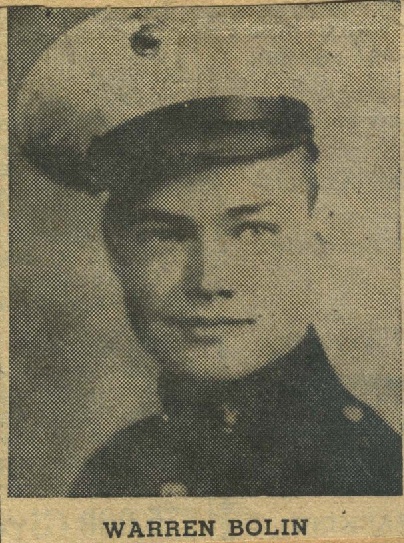
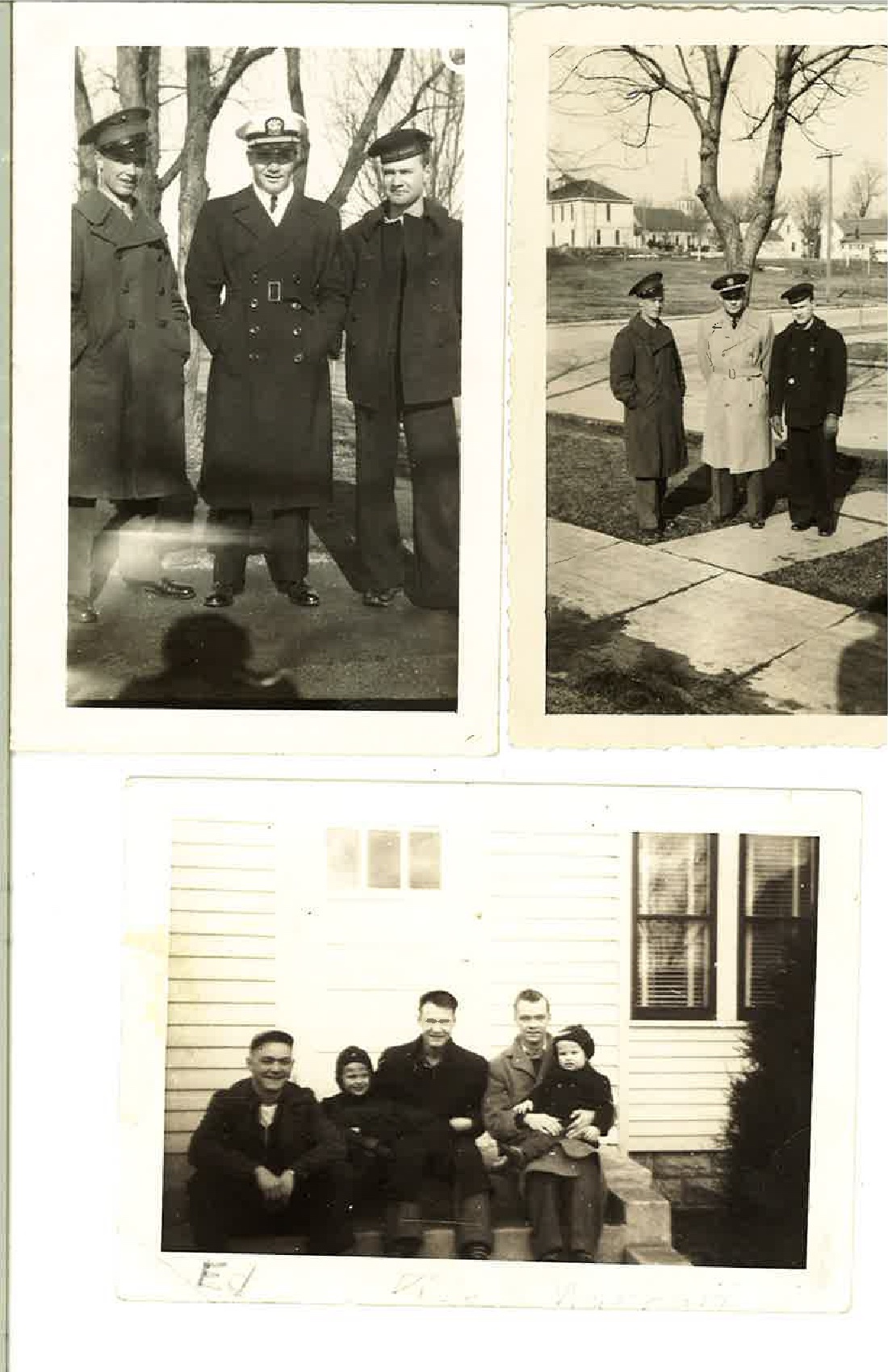
Eulogy
Neither Bolin’s body, nor any wreckage from the aircraft were ever found. He was listed as Missing in Action (MIA) on February 12, 1945. His parents, Amel and Alma Bolin, were notified of their son’s disappearance with a Western Union telegram delivered to their home. Bolin’s status remained MIA for one year until he was declared dead on February 13, 1946.
Warren A. Bolin is memorialized on Court Two of the Courts of the Missing at the Honolulu Memorial, located within the National Memorial Cemetery of the Pacific in Honolulu, Hawaii.
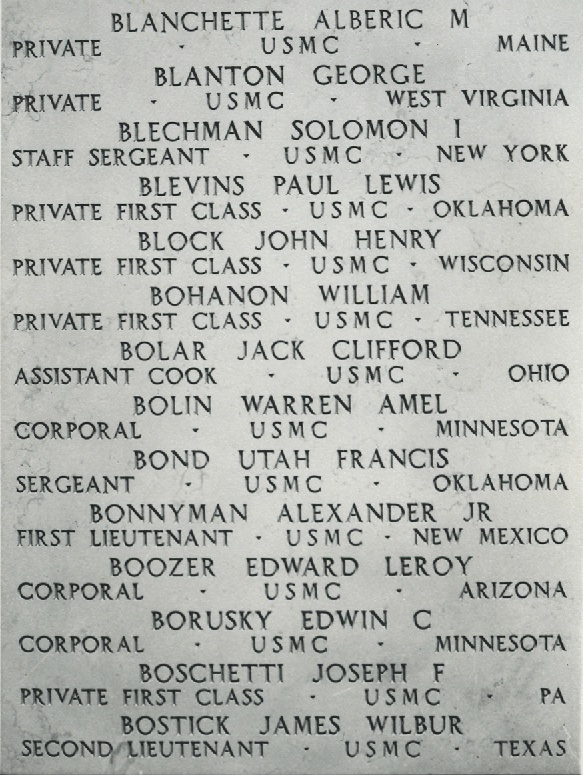
Reflection
Bibliography
Air Intelligence Group. “Interview of Lt. Col. J. R. Cram, USMC, Commanding Officer, VMB-612.” Washington, DC, April 28, 1945. Combined Arms Research Library. cgsc.cdmhost.com/cdm/ref/collection/p4013coll8/id/4128
Bolin Family Collection. 1943-1946. Courtesy of the Bolin Family.
Bolin Family Photographs. 1943. Courtesy of the Bolin Family.
Bolin, Richard. In-person interview by the author. December 24, 2016.
“Chorus and Glee Clubs Are Organized.” Saints Reporter, September 26, 1938.
Minnesota. Watonwan County. 1940 U.S. Census. Digital Images. ancestry.com.
“New Rotarians Are Selected.” Saints Reporter. April 9, 1940.
Reed, Robert. A Drop in the Bucket of World War II. Davenport: Fidlar Doubleday, 2000.
Saints Reporter, March 4, 1941.
Scutts, Jerry. PBJ Mitchell Units of the Pacific War. Oxford: Osprey Publishing, 2003.
“Senior High Elects Class Officers.” Saints Reporter. October 10, 1939.
“Warren Bolin.” American Battle Monuments Commission. Accessed December 2, 2016. www.abmc.gov/node/504135#.WOM4Wm8rIdU
Warren Bolin, Individual Deceased Personnel File, Department of the Army.
Warren Bolin, Official Military Personnel File, Department of the Navy. U.S. Marine Corps, Record of the U.S. Marine Corps, RG 127, National Archives and Records Administration – St. Louis.
World War II War Diaries; Records of the Office of the Chief of Naval Operations, Records Relating to Naval Activity During World War II, Record Group 38 (Box 1634); National Archives at College Park, College Park, MD.
WW II Action and Operational Reports; Records of the Office of the Chief of Naval Operations, Records Relating to Naval Activity During World War II, Record Group 38 (Box 1628); National Archives at College Park, College Park, MD.
This profile was researched and created with the Understanding Sacrifice program, sponsored by the American Battle Monuments Commission.

